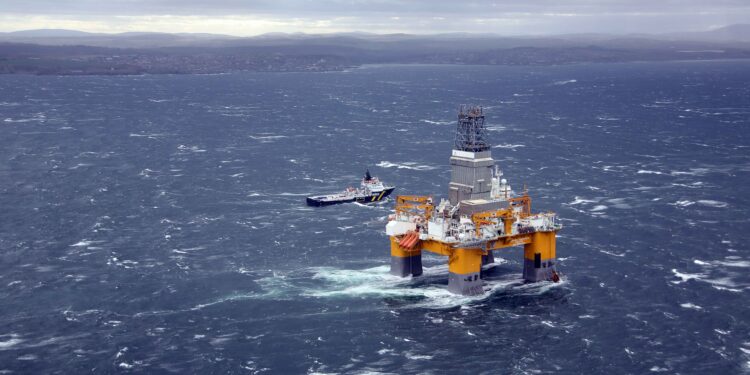Dry Again. Equinor Did Not Find Hydrocarbons In Another Well In The North Sea
Equinor drilled an exploration well in the Norwegian sector of the North Sea, which turned out to be dry. This was reported by the Norwegian Offshore Directorate (NOD).
Exploration well 35/11-28 S (Harden sør):
- was drilled 9 km west of the Fram field to a depth of 3270 m below sea level;
- the water depth in the subsoil area is 359 m;
- the purpose of drilling was to identify oil deposits in Upper Jurassic reservoir rocks (Heather Formation);
- the well penetrated the Heather formation with a total thickness of approximately 117 m, of which 29 m was sandstone with medium/poor reservoir quality and traces of hydrocarbons;
- the well is classified as dry.
Equinor received permission to conduct drilling operations from NOD in November 2023. The work was carried out in accordance with production license PL248C, which was issued on April 9, 2013 and is valid until June 4, 2035. Equinor is the operator of the license with a 30% interest, while its partners Petoro and Wellesley Petroleum hold the remaining 40% and 30% respectively. 35/11-28 S was the 6th well drilled as part of PL248C.
The well was drilled using a semi-submersible drilling rig (SSDR) Deepsea Stavanger from Odfjell Drilling:
- this is a 6th generation SSDR, improved design GVA 7500;
- built in 2010;
- designed to work in harsh conditions;
- capable of working at depths of up to 3 thousand m;
- maximum drilling depth is 10,670 m;
- with her help: in January 2023, Equinor, Wintershall Dea and Petoro discovered the Obelix Upflank gas field in the Norwegian Sea; in January 2024, Aker BP and Equinor drilled 2 exploration wells – 30/12-3 S and 30/12-3 A – in block 30/12 in the Norwegian sector of the North Sea
Equinor’s previous failures in the North Sea:
- On 11 January 2024, NOD announced that exploration well 30/4-4, drilled approximately 7 km north of the Martin Linge North Sea field and 180 km west of Bergen, was dry;
- also on January 22, 2024, NOD reported that well 30/12-3 A, drilled 40 km south of the Oseberg field and 150 km west of Bergen, also turned out to be dry.
On February 14, 2024, it became known that the Norwegian subsidiary of the Italian Eni, Vår Energi, drilled 2 dry wells at once (25/7-12 S and 25/7-12 A) 200 km northwest of Stavanger in the North Sea. The company did not comment on the drilling results.
Let us remind you that on January 16, 2024, the Norwegian Ministry of Energy summed up the results of APA-2023. Equinor became the leader in the number of licenses received – 14 as an operator, 25 as a partner. Including 18 production licenses in the North Sea, 13 in the Norwegian Sea and 8 in the Barents Sea. Then Equinor announced that it was necessary to continue active geological exploration in order to reduce the decline in production on the continental shelf.











